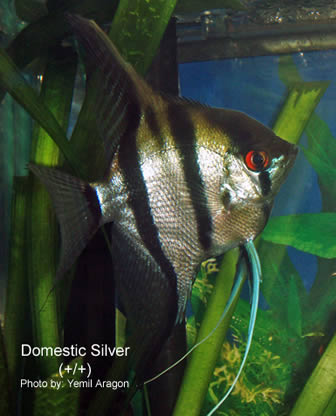Tag Archives: fungai
Disinfectants commonly used by fish breeders increase the risk of swim bladder disorder

In an effort to prevent fungal growth, many fish breeders use various chemicals, such as methylene blue, hydrogen peroxide, acriflavine and chloramine-T to aquariums where eggs are kept. This practise is especially common among breeders who will not let the parents stay with eggs and fry. Many fish species carry out parental care and eggs from such species often depend on one or both parents gently fanning fresh water over them and manually removing any unfertilized eggs from the batch. Without such parental care, the eggs easily succumb to fungi unless the fish breeder adds some type of fungicide to the water.
The new Israeli study, which focused on Angelfish (Pterophyllum scalare), revealed that some of these chemicals may be responsible for a swim bladder disorder in developing fish. In fish suffering from this type of disorder, the swim bladder can not inflate properly and the fry fails to develop into a fully free-swimming adult. Among aquarists, such fish are commonly known as “belly sliders” due to their peculiar way of moving around the fish tank.
Methylene blue
Eggs hatched in the presence of 1, 2 and 5 ppm methylene blue exhibited significant increases in swim bladder non-inflation (11%, 9% and 33%, respectively; none in controls).
Time of exposure to methylene blue was a key factor. Exposure for up to 1 day post-hatch did not affect swim bladder non-inflation, but exposure from 2 days onwards significantly increased swim bladder non-inflation.
Hydrogen peroxide
Hydrogen peroxide at 250 ppm significantly increased swim bladder non-inflation (65% comparing to 27% in the control). Higher concentrations resulted in 100% mortality.
Acriflavin
Exposure to acriflavin at 2.25 ppm, but not 1.25 ppm, significantly increased swim bladder non-inflation (75% and 52% respectively; 20% in controls).
Chloramin-T
Chloramine-T did not significantly affect swim bladder non-inflation.
For more information, see the paper “C. Sanabriaa, A. Diamantb and D. Zilberga (2009) – Effects of commonly used disinfectants and temperature on swim bladder non-inflation in freshwater angelfish, Pterophyllum scalare (Lichtenstein)”. The paper has been published in the journal Aquaculture.
